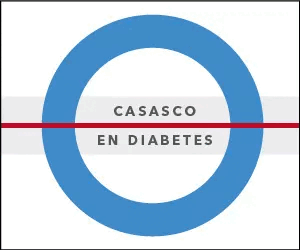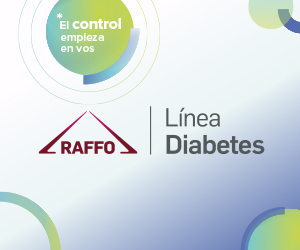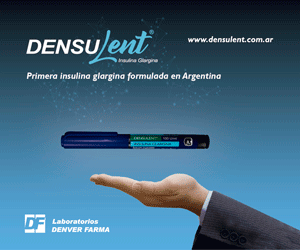O4 Effect of INGAP-PP on the expression of genes involved in extracellular matrix remodeling and angiogenesis determined by a transcriptomic analysis of rat islets
DOI:
https://doi.org/10.47196/diab.v54i3Sup.365Keywords:
ingap-pp, extracellular matrix remodeling, angiogenesisAbstract
Introduction: INGAP-PP is a peptide derived from INGAP that, in normal and diabetic animals, increases ß cell mass, insular angiogenic capacity and enhances insulin secretion stimulated by glucose (SIEG) and other secretagogues. This gives it a therapeutic potential that would act specifically on the cellular pathogenesis of diabetes. Knowing its possible effect on global changes in insular gene expression profiles would facilitate the understanding of its mechanism of action.
Objectives: to know, through a transcriptomic study, the effect of INGAP-PP on the gene expression of islet cells and the possible regulation of different signaling pathways involved.
Materials and methods: Isolated islets (collagenase) from normal Wistar rats were cultured for 4 days in RPMI medium in the absence (C) or presence of INGAP-PP 50 µg/ml (I) and 11 mM glucose. At the end, 100 islets from each group were used to study the SIEG in the presence of 3.3 mM or 16.6 mM glucose (RIA). Total RNA was extracted from the rest of the islets, one aliquot was subjected to massive RNA sequencing (RNA-seq) and another was reverse transcribed to cDNA to be used as a template in qPCR for markers of development, regeneration and angiogenesis.
Results: the presence of INGAP-PP in the culture medium enhanced the SIEG only in the presence of 16.7 mM glucose: C= 5.1±0.2 vs I=6.6±0.3 ng ins/µg DNA /h (p<0.05). Islets showed a significant increase in gene expression of developmental markers such as NKX6.1 (26%) and PDX-1 (42%). By RNA-seq we observed that INGAP PP significantly modulated (p<=0.05) the expression of 1,303 island genes. These differentially expressed genes were related to different functional pathways, such as extracellular matrix remodeling and angiogenesis, reinforcing our
previous results and demonstrating the effect of INGAP-PP on the expression of VEGF A (60%), laminin (40%) and integrin (50%). In this sense, many other genes related to development and insular neoformation emerged (such as branching morphogenesis or tubulo-epithelial development) that open possibilities for new studies.
Conclusions: these results confirm those previously described by our group on the effect of INGAP-PP on ß cell regeneration, remodeling of the extracellular matrix and angiogenesis, enabling the identification of new genes affected by this peptide and expanding its modulatory effect on the ß cell mass and function and its possible therapeutic use for the prevention and treatment of diabetes.
Downloads
Published
How to Cite
Issue
Section
License

This work is licensed under a Creative Commons Attribution-NonCommercial-NoDerivatives 4.0 International License.
Dirección Nacional de Derecho de Autor, Exp. N° 5.333.129. Instituto Nacional de la Propiedad Industrial, Marca «Revista de la Sociedad Argentina de Diabetes - Asociación Civil» N° de concesión 2.605.405 y N° de disposición 1.404/13.
La Revista de la SAD está licenciada bajo Licencia Creative Commons Atribución – No Comercial – Sin Obra Derivada 4.0 Internacional.
Por otra parte, la Revista SAD permite que los autores mantengan los derechos de autor sin restricciones.

































